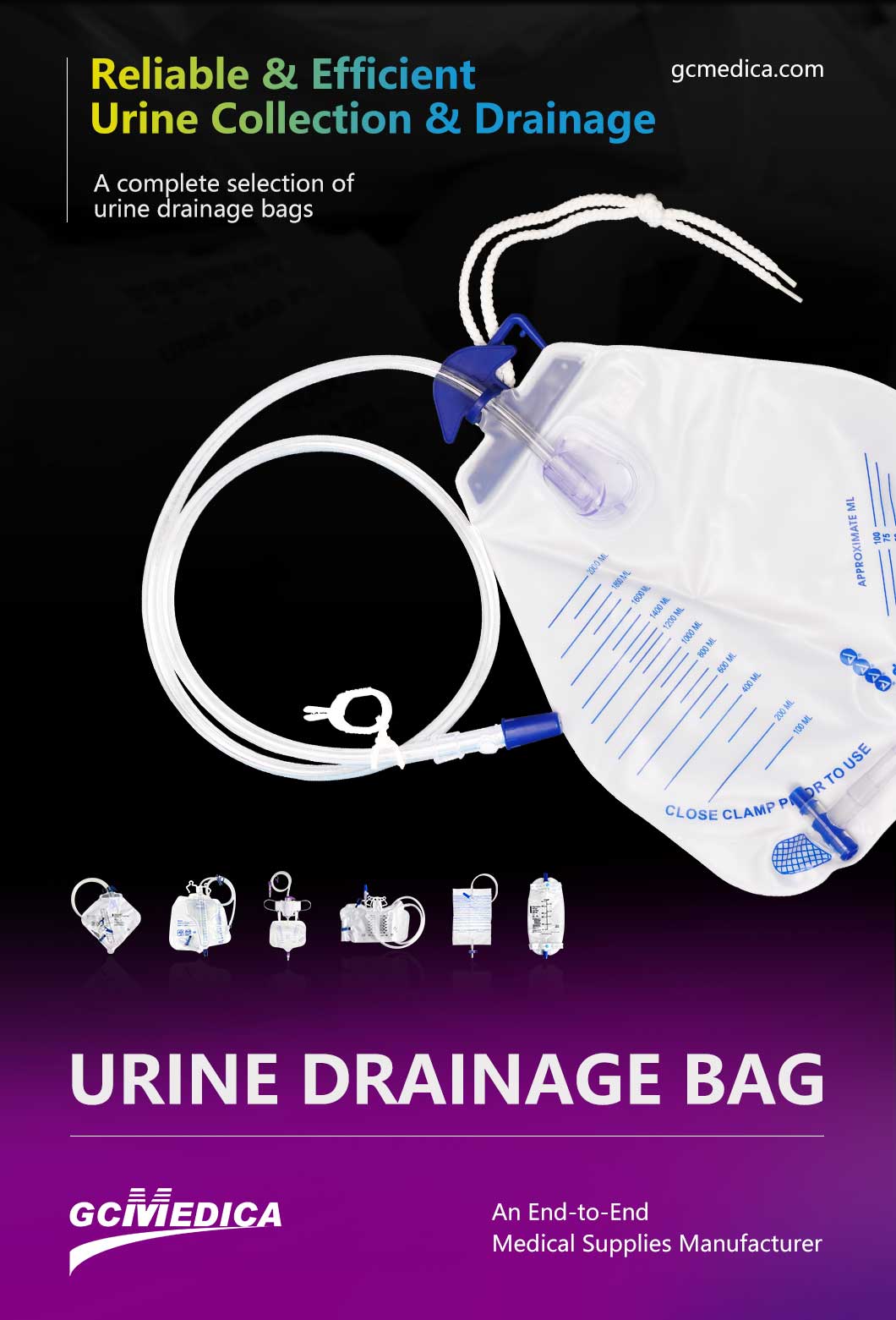Selecting the appropriate urine collection bags is vital for healthcare facilities to ensure patient comfort, maintain hygiene standards, and facilitate effective urinary management. This guide outlines key factors to consider when procuring urine collection bags for medical settings.
1. Types of Urine Collection Bags
Understanding the different types of urine collection bags is essential:
Leg Bags: Designed for patient mobility, these smaller capacity bags are strapped to the leg and worn discreetly under clothing. They are suitable for ambulatory
patients requiring continuous urinary drainage.
Bedside (Night) Bags: Larger capacity bags intended for use during nighttime or for bedridden patients. These are typically hung beside the bed to collect urine over extended periods.
| Learn more about urine drainage bags > |
2. Capacity Considerations
Urine collection bags come in various capacities, commonly ranging from 500 milliliters to 2 liters. The choice depends on patient needs and the intended duration of use:
500–750 mL: Ideal for leg bags, promoting discretion and mobility.
1000–2000 mL: Suitable for bedside bags, reducing the frequency of emptying, especially during nighttime use.
3. Material and Build Quality
High-quality, medical-grade materials ensure durability and reduce the risk of leaks or tears. Materials should be free from latex to prevent allergic reactions and should be transparent to allow for easy monitoring of urine output and color.
4. Drainage Valve Mechanism
An efficient drainage valve is crucial for ease of use and to prevent backflow, which can lead to infections:
Anti-Reflux Valve: Prevents urine from flowing back into the tubing, minimizing infection risks.
User-Friendly Tap or Clamp: Facilitates easy emptying of the bag without spillage.
5. Tube Length and Flexibility
The tubing should be of adequate length to allow comfortable positioning of the bag, whether attached to the leg or bedside. Flexible, kink-resistant tubing ensures uninterrupted urine flow and enhances patient comfort.
6. Sterility and Infection Control
To uphold hygiene standards and prevent infections:
Sterile Packaging: Ensure each bag is individually packaged and sterilized.
Single-Use Design: Disposable bags reduce the risk of cross-contamination.
7. Attachment and Support Mechanisms
For leg bags, adjustable, comfortable straps are essential to secure the bag without restricting circulation. Bedside bags should come with reliable hanging mechanisms to attach securely to bed frames or stands.
8. Compliance with Regulatory Standards
Ensure that the urine collection bags meet relevant medical standards and regulations, such as ISO certifications, to guarantee safety and efficacy.
9. Cost and Supplier Reliability
While cost-effectiveness is important, prioritize quality and reliability. Choose reputable suppliers known for consistent product quality and dependable customer support.
Conclusion
Selecting the right urine collection bags involves careful consideration of bag type, capacity, material quality, drainage mechanisms, tubing, sterility, attachment methods, regulatory compliance, and supplier credibility. By focusing on these factors, healthcare facilities can enhance patient care, ensure safety, and maintain operational efficiency.


 Français
Français Español
Español Products
Products

 About Us
About Us












